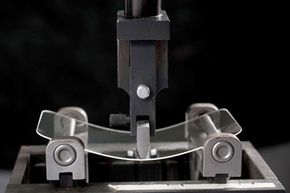Apple's iPad might go down in history as one of the most scrutinized pieces of technology ever to hit store shelves. By the time former Apple CEO Steve Jobs took the stage in 2010 to unveil the iPad, rumors of an Apple-branded tablet device had already been circulating for years. Since its successful launch, numerous blogs and Web sites have dismantled and examined every last chip, sensor and wire in the iPad. But one part of the device still remains a mystery: the screen.
The iPad's screen is arguably the most important component for the device. Almost every interaction with the iPad involves using the touch-screen interface in some way. That screen has to be able to protect the delicate circuitry inside the iPad while providing a pristine viewing experience. How do you guarantee that a screen will be thin, clear and strong?
Advertisement
The answer lies in aluminosilicate glass. Normal glass is made from silica and a few other components. Provide enough heat to melt these components together, and you'll get liquefied glass. When the liquid cools, you'll have a solid piece of glass.
Aluminosilicate glass has a special mixture of materials like silicon dioxide, aluminum and oxygen that creates a particularly resilient type of glass. When properly prepared, this glass is scratch-resistant and difficult to break or shatter. Consumer electronics ranging from televisions to smartphones rely on aluminosilicate glass to withstand daily use.
One of the leading companies in aluminosilicate glass manufacturing is Corning. Corning has a long history with glass and ceramics -- you may be familiar with CorningWare dishes. But some of Corning's biggest customers are other companies like Samsung and Sony. These companies use Corning's Gorilla Glass to provide protection and ensure longevity for their consumer products. But is Apple among them?
Advertisement



